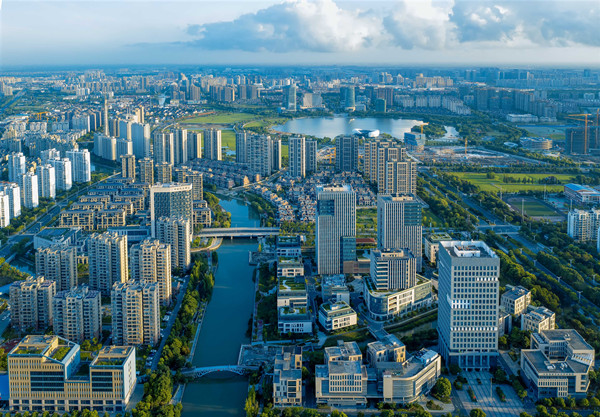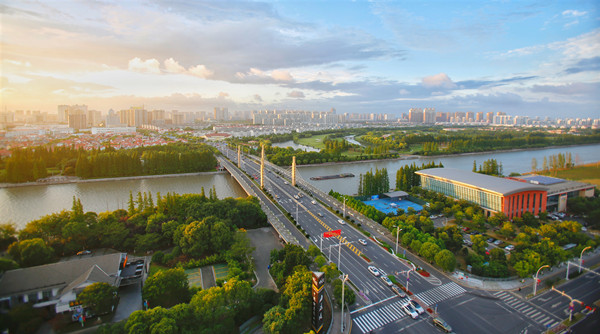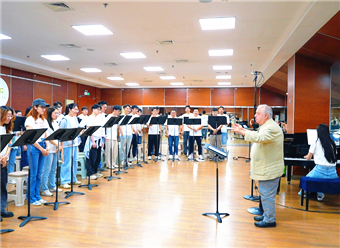Painting
Taicang has a long history and is a gathering place of talents, the cradle of "Loudong school of painting", and has been long known as the "Town of painting". During the 600 years since the Yuan, Ming and Qing dynasties, the rich and fertile soil of culture here has given birth to hundreds of painters and great masters who have shone through the history of painting. Qiu Ying, a representative painter of the Ming Dynasty, was later known as one of the "Four masters in Ming" together with Shen Zhou, Wen Zhengming and Tang Bohu. Qiu Ying specializes in painting figures, landscapes, flowers and birds, pavilions and terraces, especially counterdrawing. He has exquisite painting skills and mostly imitated Tang and Song masters scripts, such as "Counterdrawing Song People Album" and "Counterdrawing Xiaozhao’s Emperor Gaozong Zhongxing Ruiying Figure"; if compared with the original one, the former can hardly be distinguished.
The "Loudong school of painting" which was represented by Wang Shimin, Wang Yuanqi, Wang Jian, Wang Hui in the early Qing dynasty was born in Taicang of Jiangsu. This is a fairly important school of painting in the history of Chinese painting art. It was not only in the leading position in the entire Qing Dynasty, its influence continues even today, and formed the headquarters for southern landscape painting. Later, the "four little Wang", "four later Wang" and so on, were also quite well-known for hundreds of years. After the founding of new China, the "Loudong school of painting" revived.
The famous painter Zhu Qizhan (1892-1996) and Song Wenzhi (1919-1999), originating from Taicang, both had great achievements in morality and painting art, each with his own unique artistic style, and are well known at home and abroad. Zhu Qizhan, the well-known long-life painter has a sophisticated painting style which is self-contained, and deserves the reputation of "master of painting". He began to copy from old paintings at the age of 8. He has been to Japan twice to learn oil painting and focuses on Chinese painting from the 1950s. He is good at landscapes, flowers, especially orchids, bamboo and stone. His works integrate the East and West and are committed to innovation. His works are in bold relief, full of power and grandeur, with distinctive ethnic characteristics and personal style. Song Wenzhi, the famous landscape painter, learned from influential painters and drew from their techniques. Enlightened by "splashing color" and other new techniques, his works are full of fresh air, fun and the innovative pioneering nature of modern Chinese landscape painting.
In order to carry forward the spirit of two masters of noble character and their devotion to the art, Taicang Municipal People’s Government appropriated and built "Plum Cottage" and "Song Wenzhi Art Museum" in 1989. The museum is a public institution covering an area of over 1,000 square meters. The main exhibition hall has white-washed walls and an antique flavor. In the courtyard, a rock feature and lotus pool are elegantly furnished and the white marble statue of Mr. Song Wenzhi is located among fine wood and tall bamboos for visitors to pay their respects. The museum is adjacent to Mr. Song Wenzhi’s former residence at "Pine stone house". Embraced by old pines and rare stone, it is the living place where Mr. Song used to return and spend his creative life.
Song Wenzhi Art Museum is a contemporary hall of fame, with a collection of representative works Mr. Song Wenzhi donated in his lifetime, paintings, calligraphy treasures and unearthed cultural relics of Ming and Qing dynasties. It also has a collection of many contemporary paintings and calligraphy masterpieces. In addition to year-round opening of the museum, it also carries out academic research, calligraphy and painting exchanges, and personnel training. Since its ten years of establishment, it has held more than 60 sessions of various painting and calligraphy exhibitions and Zhu Qizhan’s centenary exhibition was also held here. It has successively received Peng Chong, Wang Guangying and other state leaders and Hua Junwu, Tang Yun, Ya Ming and many other painters and calligraphers, as well as Chinese and foreign friends, and up to tens of thousands of visitors. Li Ruihuan, chairman of CPPCC, has written an inscription specifically for the museum: "Beautiful scenery of the country, even more brilliant when painted". The museum is an important window to Taicang’s socialist spiritual civilization.









